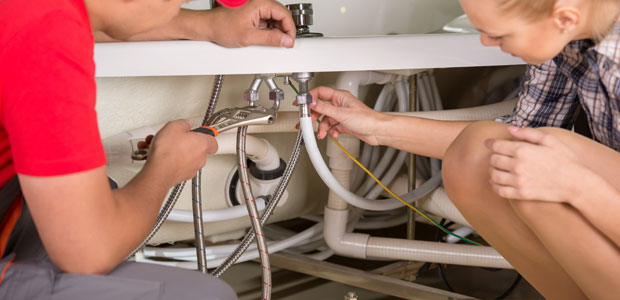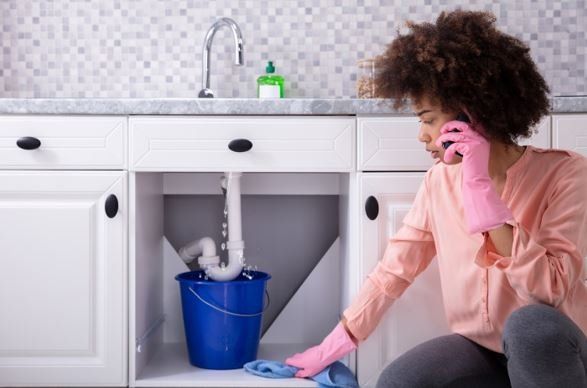How to Locate and Address Water Leaks in the Bathroom: Expert Tips
How to Locate and Address Water Leaks in the Bathroom: Expert Tips
Blog Article
Were you on the lookout for facts and techniques on Tips For Water Leak Detection In Bathroom?

Washroom leaks are frustrating as they disrupt your day's strategy. They vary in severity depending on the resource of the leakage. Yet, you need to prioritize them, as they can quickly get worse. It is a relief that a lot of bathroom leakages are simple to take care of as well as discover, with very little expense effects.
Having a water leak in washroom can be demanding to the house owner. Yet fixing the leakage ends up being a simple problem if you know what to do. This post is essential as a home guide to dealing with a water and also spotting leakage in shower room. It does not replace the need for specialist know-how. The article serves as a "emergency treatment" when you require an emergency response to a water leakage in restroom.
Detection as well as Repair of Water Leak in Bathroom
Water leakage in restroom commonly results from pipes as well as pipe mistakes. You might require a standard understanding of these leakage types to discover the water leakage in shower room.
Clogged Bathroom Sinks
Occasionally, the water leak in shower room results from sink clogs. This is usually a nuisance to house owners and also may be unpleasant. Blockages may result from the buildup of soap scum, hair fragments, or debris that clog the drain. It is very easy to handle blockages, and you may not require specialist skills.
What to Do
You can use a drain snake to eliminate the particles in the drain and allow the stationary water circulation. Drain cleansers are also offered in stores as well as are easy to use. A bettor is also useful in clearing your drainpipe. It is an usual family tool and comes in convenient in getting rid of annoying clogs in sinks and also drains pipes.
Toilet Leaks
In some cases, water leaks from the commode as well as swimming pools around the bathroom base. It is an eye sore in the washroom as well as needs timely interest. Occasionally, it results from a loose link between the bathroom and the storage tank. This creates water to drip from the tank to the floor. It may also result from splits in the toilet dish or a defective shut-off shutoff.
What to Do
If there are loose screws in between the tank and also commode, you only require to tighten them. Often you may need to reapply wax on the gasket or contact a bathroom leakage professional to change worn or broken components.
Dash Leaks
These typically result from water spilling on the bathroom flooring from the bathtub. It harms the bathroom floor and also may create rot to wood floorings as well as shower room doors.
What to Do
If the leakage has actually harmed the washroom flooring or door, you might need to alter these to avoid additional damage. The excellent information is that you can include a plumbing specialist to assist with the bathroom fixing.
Final thought
Water leakages in the shower room are preventable events in the house. Upkeep and also routine checks aid to maintain everything in tip-top form. Yet, you can never ever be too careful, and also these occasions still take place. When they do, fix them promptly, or engage the services of a professional.
The article serves as a "very first help" when you require an emergency action to a water leakage in restroom.
Water leakage in washroom generally results from plumbing and also pipe mistakes. You might need a standard expertise of these leakage kinds to detect the water leakage in shower room. Often, the water leak in washroom results from sink obstructions. It damages the restroom flooring and also may cause rot to wooden floors and also restroom doors.
Tricks for Locating a Water Leak in Your Bathroom
Run a Test Using Your Water Meter
One of the clearest indications of a leak in your household is if there’s a sudden unexplained increase in the water bill. For the most part, your water usage shouldn’t change too much from month to month, so a sudden surge is a surefire warning sign.
For further evidence of a leak, Bob Vila recommends this simple test. First, "turn off all the water faucets in your home, and make sure the washing machine and dishwasher are not running." Go to your water meter and look over the reading. After two hours, see if there is a change in the reading. If there is, you've definitely got a leak on your hands and it may be coming from your bathroom!
Test The Toilet
Toilets are among the leading culprits when it comes to unexplained leaks. The rubber stopper (knowns as the flapper) that separates the tank from the bowl can become brittle over time, creating a leak. If you have a toilet that periodically runs on its own for a few seconds, this is probably why.
To confirm your suspicions, put a couple of drops of food coloring into the tank of the toilet. Return after a few minutes and check the bowl. If the dye has entered the bowl, then there’s a leak that should be repaired.
Check for Water Damage to The Walls and Ceilings
If you have a leak emanating from an upstairs bathroom, one of the first things you’ll notice is water damage on the ceiling of the room below. Watermarks and discoloration are clear indicators of leaks, but you might also notice flaking or peeling paint.
Remember: Water doesn't always follow predictable routes. So if you see water marks on the walls, those could also be the result of a leaky upstairs bathroom.
Be Aware of Musty Odors
When it comes to bathroom leaks, the nose often knows best. An undetected leak can go on for quite some time, resulting in the ideal conditions for mold and mildew. Mold has an unpleasant odor and is a sign that your home could be suffering from significant water damage. It’s also a health hazard, especially for those who suffer from respiratory illnesses and allergies, so it's important you have it remedied as quickly as you can.
Inspect Bathtub and Shower Seals
You might not see any leaks or notice any obvious signs of water damage, but it’s important that you look for gaps between the seals surrounding your shower, bathtub, and walls. These kinds of leaks may require extensive renovations if they’re not repaired promptly.
Any presence of moisture on the seals is indicative of a problem, as is peeling or bubbling paint on the bathroom walls. If you have vinyl flooring, be cognizant of curling or bubbles and soft spots in the wood beneath.
https://www.waterdamagerestorationaz.com/locating-bathroom-water-leak-tricks

I came across that piece of writing on Tips For Water Leak Detection In Bathroom when looking around the web. Kindly take a moment to promote this article if you enjoyed reading it. Many thanks for going through it.
For instant fixes, dial! Report this page